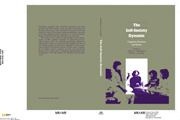Book contents
- Frontmatter
- Contents
- Contributors
- Preface and acknowledgments
- Introduction: The self–society dynamic
- 1 Exploring the relevance of social cognition for the relationship of self and society: Linking the cognitive perspective and identity theory
- 2 Toward a sociology of cognition
- 3 The cerebral self: Thinking and planning about identity-relevant activity
- 4 Growing up: The development and acquisition of social knowledge
- 5 The social contexts of self-feeling
- 6 Self-processes and emotional experiences
- 7 An affect control view of cognition and emotion
- 8 The self-concept as a basis for a theory of motivation
- 9 Attitudes, behavior, and the self
- 10 From changing selves toward changing society
- 11 Possible selves and social support: Social cognitive resources for coping and striving
- 12 Is the road to helping paved with good intentions? Or inertia?
- 13 Social structure and the moral self
- 14 The production of selves in personal relationships
- 15 Conclusion
- Indexes
3 - The cerebral self: Thinking and planning about identity-relevant activity
Published online by Cambridge University Press: 23 September 2009
- Frontmatter
- Contents
- Contributors
- Preface and acknowledgments
- Introduction: The self–society dynamic
- 1 Exploring the relevance of social cognition for the relationship of self and society: Linking the cognitive perspective and identity theory
- 2 Toward a sociology of cognition
- 3 The cerebral self: Thinking and planning about identity-relevant activity
- 4 Growing up: The development and acquisition of social knowledge
- 5 The social contexts of self-feeling
- 6 Self-processes and emotional experiences
- 7 An affect control view of cognition and emotion
- 8 The self-concept as a basis for a theory of motivation
- 9 Attitudes, behavior, and the self
- 10 From changing selves toward changing society
- 11 Possible selves and social support: Social cognitive resources for coping and striving
- 12 Is the road to helping paved with good intentions? Or inertia?
- 13 Social structure and the moral self
- 14 The production of selves in personal relationships
- 15 Conclusion
- Indexes
Summary
In 1979, Morris Rosenberg began his book, Conceiving the Self, with the following statement: “It is somewhat astonishing to think that after decades of theory and research on the self-concept, investigators are as far as ever from agreeing on what it is or what it includes” (1979: 3). This statement is perhaps as timely today as it was when published. Over the last decade, however, the gap has been narrowing between theoretical statements of the nature of self and empirical investigations of those theoretical statements. Researchers have systematically developed measurement instruments for these conceptualizations. The result has been to sharpen the debate about what constitutes the self. Within this debate, identity theory has posited the link between commitment and identity, qua “self-structure” (Stryker, 1987a, 1987b). This chapter presents a rationale for including cognitive activity, that is, the processes of thinking and planning about identity-relevant activity, within the model of self-structure offered by identity theory (Stryker, this volume). Specifically, the direct effect of cognitive activity on the structure of self is considered.
Social cognition and symbolic interactionism's treatment of thinking and planning
Cognitive social psychologists have been asserting that processes exist by which individuals “think” about self. These processes, they suggest, help determine the behavior of the individual. Much research in the area of social cognition has focused on the functions of the self that relate to affect, perception, and behavior. (For a review of research in social cognition of the self, see Greenwald & Pratkanis, 1984.)
- Type
- Chapter
- Information
- The Self-Society DynamicCognition, Emotion and Action, pp. 55 - 74Publisher: Cambridge University PressPrint publication year: 1991
- 13
- Cited by

